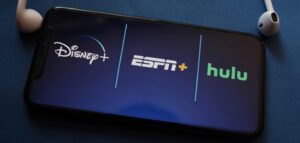Is it just me, or do third-quarter earnings always seem especially strange?
My theory: It’s because they’re typically released at the end of the year, but most don’t contain any actual end-of-year insights, giving them an odd kind of liminal quality. (You know, like trying to do work during the holidays.)
Am I waxing too poetically about legally required financial statements? Probably. But even if it feels too premature, those larger patterns are still worth investigating.
Here’s what I’ve noticed so far this year in the TV and CTV advertising landscapes. Think of it as a preview for AdExchanger’s forthcoming end of 2025 coverage, if that helps!
Linear TV continues to falter
Between comparisons to the Summer Olympics and the US presidential race last year, 2025 was always going to feel like a letdown, especially during Q3. But it’s still surprising to see just how much margins have dropped. It seems like double digits across the board.
For Paramount Skydance, advertising revenue declines led the company to fall 12% in its TV revenue year over year. Warner Bros. Discovery, which hosted the Olympics in international territories on HBO Max, faced an even bigger decline of 22% in linear TV.
And Disney, which starts its fiscal calendar a quarter early (and, thus, already lives in the future), posted a 16% YOY decline in linear network revenue for Q3 and a 12% decline for the entirety of 2025.
Still, it’s too early to write off linear TV as a channel entirely. Those parts of the business still tend to generate the most revenue – with some notable exceptions, like Netflix (which never had a linear arm to begin with) and Disney (which is posting three times the amount of direct-to-consumer revenue compared to global linear networks).
AVOD is little but fierce
That being said, streaming revenue is helping to offset linear declines, especially now that every major broadcaster has at least one successful platform in their roster. Even Fox launched its new Fox One service in August and, at the same time, finally turned a profit on FAST channel provider Tubi.
Across the industry, ad-supported subscription tiers are growing exponentially – even though, to borrow a phrase from Netflix, they’re “off a relatively small base.”
So far, it seems like companies that have prioritized unifying and managing their own ad tech stack are having the most success with it. Look at Disney, which built its own proprietary ad server for Disney+ and Hulu from the ground up way back in 2020 and now uses the same stack for its new ESPN streaming service.
On the other end of the spectrum, Paramount Skydance, which has yet to unify its own tech stack for Paramount, Pluto TV and BET+, is making most of its streaming money on subscribers, not advertisements.
Sports? Sports!
Back to ESPN for a second. Whether or not sports should be folded into the main streaming offering or split out into a separate platform is starting to become an industrywide differentiator.
NBCUniversal has gone the direct route with Peacock, and Paramount+ and Fox One are doing the same. But WBD, which has been offering sports on HBO Max up to this point, still plans to switch things up with a new TNT-specific app. According to what CEO David Zaslav told advertisers last week, they tend to see more financial success with sports as an add-on anyway.
Disney, meanwhile, is seemingly trying to have it both ways. Viewers can watch sports through Disney+ with an ESPN subscription, but now there’s also a separate ESPN+ app, similar to how Hulu content exists across multiple platforms. But, as CEO Bob Iger shared during Q2 earnings, the standalone Hulu app is being phased out next year.
This transition also raises some questions about sports streamer Fubu, which is officially being merged into Disney’s Hulu + Live business – meaning that it, too, might end up getting folded into one platform or another at some point.
Either way, one thing feels certain: advertisers are going to follow those sports wherever they end up.
Questions? Comments? Drop me a line at victoria@adexchanger.com.
















